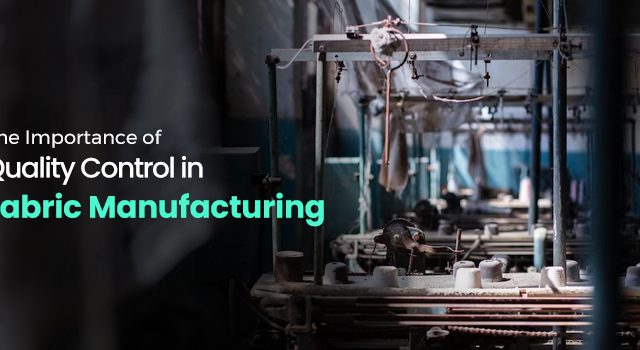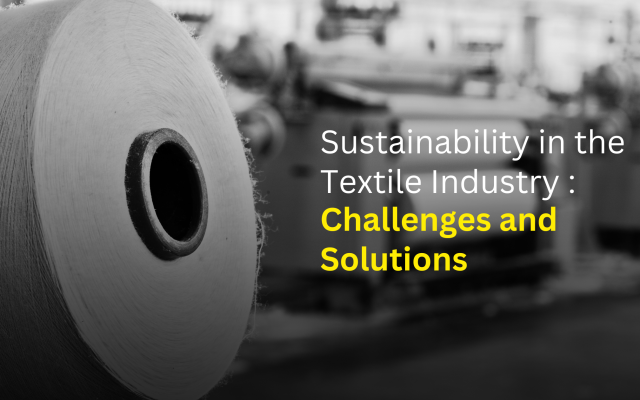A lot of things have affected the textile industry as a whole, such as the pandemic, social-political-economic changes, and trade agreements. However, it still has the potential to scale more than a billion-dollar in the coming years. Growing business for textile manufacturers in India is challenging, as it involves making crucial decisions in labor, quality, operational efficiency, supply chain, and product offerings. While doing so fabric suppliers must also keep pace with the competition and stay informed about the latest trends and technological advancements. However, the end result is always rewarding.
With the current market condition, we can predict a great opportunity in the manufacturing sector. While you may need to cross several obstacles, our four growth tips will make conquering them easier in the rapidly advancing textile industry.
1. Invest in Technology to Automate Your Manufacturing Unit and Hire Tech Talent
Two of the biggest challenges textile companies in India face are the need for process and supply chain process automation and the lack of skilled staff that understands technology. In fact, approximately 80% of fabric suppliers in India struggle to find the skills they need. Since textile automation technologies, like TEXchange, are rapidly expanding, it is time for manufacturers to create businesses that are powered by technology and a workforce with ample expertise.
While we can help you with regard to supply-chain technology, as TEXchange is a completely automated and digital trading platform, you also need technology for automating operations and production processes.
Find talented people who not only have basic computer and tech knowledge but who can also expertly navigate complicated automation software systems for manufacturing.
If you cannot hire skilled experts, invest in an in-house technical training program to mentor your staff in modern technology.
2. Be Where Your Customers Are
The internet is the only other place your customers visit besides your office. Most textile companies in India argue they don’t need to be on social media or have a website because they can generate revenue through traditional word of mouth and reference.
But unfortunately, we are in a digital era. The internet has changed the way how consumers interact with fabric suppliers, and digital technologies have revolutionized buying and selling wholesale fabric online. If you aren’t online, you will probably start losing your consumers and have no means to generate fresh leads.
In 2023, establishing and maintaining an online presence is necessary for growth. Small textile manufacturers in India with small marketing budgets can use free website-building tools like WordPress or Wix to develop their websites for free or leverage the power of Instagram, LinkedIn, and Facebook to create an online brand.
Email marketing is another versatile digital marketing tool for B2B and B2C that can help gain a lot of traction for your business.
However, if you have a good chunk of time, you can hire a qualified website development and digital marketing company like DIInfotech to create a brand that represents your business value the best.
3. Optimize Your Internal Operations
Creating an efficient and seamless workflow should be the top priority of knitted and woven fabric manufacturers in India to grow worldwide. The solution is an effective ERP (Enterprise Resource Planning) system. ERPs can be integrated with different applications, such as supply chain, logistics, customer relationship, asset management, and human resource, to automate several back-office operations, reduce time, and minimize manual labor.
With smartphone technology and mobile applications, you can streamline and access internal communication, which is the key to a strong workflow.
4. Adapt and Invent Based on Changing Demands of Consumers
The Indian textile manufacturing industry is quite dynamic, constantly changing in response to evolving customer demands, economic fluctuations, and technology disruptions. In order to remain competitive, textile companies in India must adopt an agile approach and be flexible enough to make necessary adjustments to keep up with the industry trends.
While technological adaptation may come at a significant cost, failing to embrace modernization in manufacturing textiles can be even more costly. Besides, technologically advanced competitors can steal your customers anytime with better services at reduced costs. Investment in process automation technology may seem expensive at the moment as it may add additional costs, such as installation and maintenance.
But production, quality, and efficiency improvement will save money in the long term.
Join DMI and TEXchange Network to Usher Growth
Moving beyond traditional tools and tactics and embracing digital approaches, like TEXchange Global, is the only way for companies to stay ahead of the curve.
Whether you want to fly across the internet or scale through the traditional method, we got you covered.
Whether you are a millennial business that likes everything real-time and technologically advanced, or a firm that appreciates the human touch, we got you covered.
Score your textile business goal in two ways – join the DMI and TEXchange network and experience smart trading like never before.
We have 360-degree textile trading solutions for national and international start-ups, SMEs, corporates, wholesalers, manufacturers, exporters, and importers.




